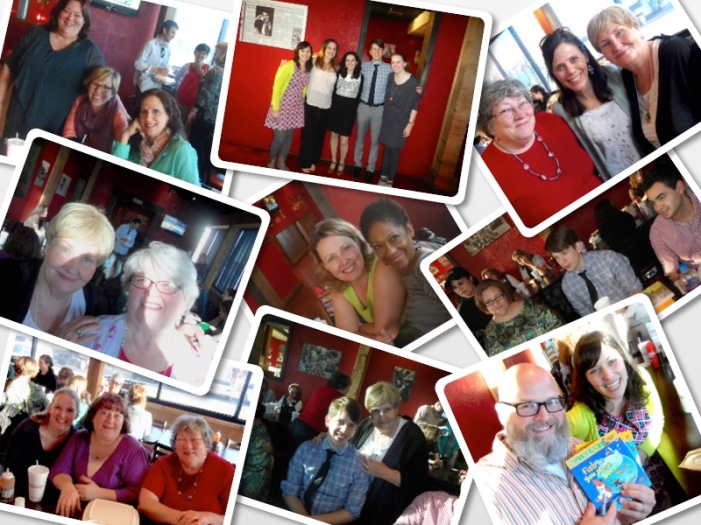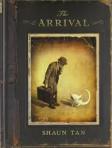The Academy of American Poets have declared April National Poetry Month, so I’m here to share my latest poetry read with you. Also, a reminder that April 24th is Poem in Your Pocket Day where poetry fans throughout the United States select a poem, carry it with them, and share it. Join it the fun by tweeting about your poem of choice on Twitter this year at #pocketpoem.
OKLAHOMA POEMS… AND THEIR POETS
edited by Nathan Brown
I met Nathan Brown, the current Oklahoma Poet Laureate, and editor of this anthology, during a summer course I took from the University of Oklahoma that was held in Santa Fe, New Mexico, a few years ago. I actually wrote about meeting him here. Nathan put together this fantastic book of poems about Oklahoma by some well-known poets from Oklahoma to give readers a taste of what Oklahoma is like, in all its many subtle forms. And what an amazing job he did.
(Not to play favorites, but our own Anna Myers has a talented son who writes poetry. Ben Myers contributes a poem entitled “Deep Fork”. Ben is a phenomenal poet whose work I’ve reviewed right here on this blog and if you haven’t read his books you must go out a procure them now or you’ll regret it deep in your soul forever. Okay, maybe playing a little favorites.)

An anthology edited by Nathan Brown, the 2013 – 2014 Poet Laureate of Oklahoma. It includes poems “about” Oklahoma that are written by natives, ex-pats, and visitors alike. These poems are an honest, and sometimes raw, look at the state’s past and present by way of three chapters titled: People, Places, and Odds & Ends. Among the poets represented are Pulitzer winners Stephen Dunn and N. Scott Momaday, as well as Naomi Shihab Nye, Joy Harjo, George Bilgere, Ron Padgett, and many others.(Plot summary from Goodreads.)
As someone who has always felt like an outsider, one who could not easily identify with a particular group comfortably, I’ve struggled to place myself somewhere – to understand where I come from.
What are my roots? Who are my people?
I’ve always thought of myself as some homogenized American mutt, with no special culture to speak of – a slice of white bread in a world of whole grain artisan loaves.
Void of nutritional value.
Tasteless.
Boring.
Strangely, this poetry collection helped me see glimpses of my childhood, reminding me of things I’d forgotten through its portrayals of rural life, the deep connection to the land and weather, the sense of community when tragedy strikes, and even the naked bigotry and oppression portrayed in some poems. These are some of the forces that molded me. This is where I come from. I am pieces of all of them, in some ways – the good and the bad. These are my people.
Here is an example of one the poems that sparked a sense of nostalgia for me. A short, but brilliant poem by Joey Brown
MERIDIAN, OKLAHOMA
Three boys wake up in a town that’s not really
a town, weighted down by the early morning
summer, and breathe sour sulphur from the refinery
that clanks and churns or whatever refineries do
to make someone some little bit of money.
It’s not them, not their house, so what do they care
but for the nagging smell.
Three boys pump their bicycles on the highway
past the yard of rusted-up drill bits. You’d be afraid
for them were this a highway anywhere else. In the
convenience store they take two Cokes and an
orange Fanta from the lay-down cooler. They like the
pop & sigh the bottle opener makes. When the door
opens again, the air conditioner pleads.
Three boys wait in the parking lot but don’t know
they’re waiting. Sit astride the bikes, bottles clinking
here and there, don’t speak. They stare at the white
day reflecting off the school across the road,
blistering their eyes. You just know they don’t
imagine the size of it all. They can’t. One of them
keeps firecrackers leftover in his pocket.
Just a simple summer afternoon in a small town, but holy cow, did this light up my brain with a flood of memories and sensory images!
How had I forgotten that we used to live two doors down from a small fire station? In the summer time, we would always go over there and bug the crap out of hang out with the firefighters. Not really for very long, just to say ‘hi’ and snag a super frosty Coke or orange Crush from their lay-down cooler, just like in this poem. It only cost a quarter and it was so cool to get pop in a bottle.
And we would ride our bikes everywhere. All over town, on busy streets, from sun up to sun down. On the best days, we’d end up at Champlain Pool. We’d swim all day – jumping off the high dive and dreading adult swim. Ah! Some of my best summer memories. All uncorked by a simple poem.
And there is a fantastic poem by George Bilgere entitled “Cordell”, that I truly love, and not just because the title has a familial connection for me. It’s all about a first solo road trip on a grasshopper green motorcycle. It’s a little long to share the whole thing here, but I encourage you to find it and read it. Well worth the search.
Here’s just a few lines to give you a taste:
For the first time
I pondered the venous skin
of a map and chartered a route from Burns Flat
to Cordell, a little town
on the Oklahoma plains. The day
was sparkling and unrehearsed, the air
cool in the morning, and for the first time
I went out on the public roads alone,
despite having no license, the world
for the first time passing by in a rush
at the tips of my handlebars,
a pick-up passing now and then,
the farmer inside raising the index finger
of his left hand precisely
one inch above the wheel, a man
greeting me as a man
for the first time,
It goes on and on and I could just drink it up like a cool glass of iced tea.
How that poem brought me back to the day I got my driver’s license and the freedom that was now mine. And all the crazy adventures I had with my friends out on the open road. When you’re from a small town, sometimes there’s nothing to do but pile into your car with your friends and drive. Sometimes you end up at the lake, sometimes you end up at a keg party in a wheat field, and sometimes you just end up in trouble.
Best not tell about that last one.
There are several poems that talk of the land and weather where you can almost smell rain in the air right before a good thunderstorm.
Here’s beautiful one by N. Scott Momaday.
THE LAND
The first people to enter upon it
Must have given it a name, wind-borne
and elemental,
Like summer rain.
The name must have given spirit to the land,
For so it is with names.
Before the first people there must have been
The profound isolation of night and day,
The blazing shield of the sun,
The darkness winnowed from the stars –
The holy havoc of myth and origin,
True and prophetic, and inexorable,
Like summer rain.
What was to become of the land?
What was the land to become?
What was there in the land to define
The falling of the rain and the turning of the seasons,
The far and forever silence of the universe?
A voice, a name,
Words echoing the whir of wings
Swelled among the clouds
And sounded on the red earth in the wake
of creation.
A voice. A name.
Oklahoma.
Just gorgeous imagery.
I always learn so much from reading poetry. This book brought me closer to home than I realized I needed to go. It’s a well-chosen collection, diverse in topic and voice and all very, truly Oklahoma. I hope you’ll take the time to read it yourself.
One more great thing about this book is that the proceeds benefit the Oklahoma Humanities Council.
Learn more about Nathan Brown here.
Follow Nathan on Facebook here.

























